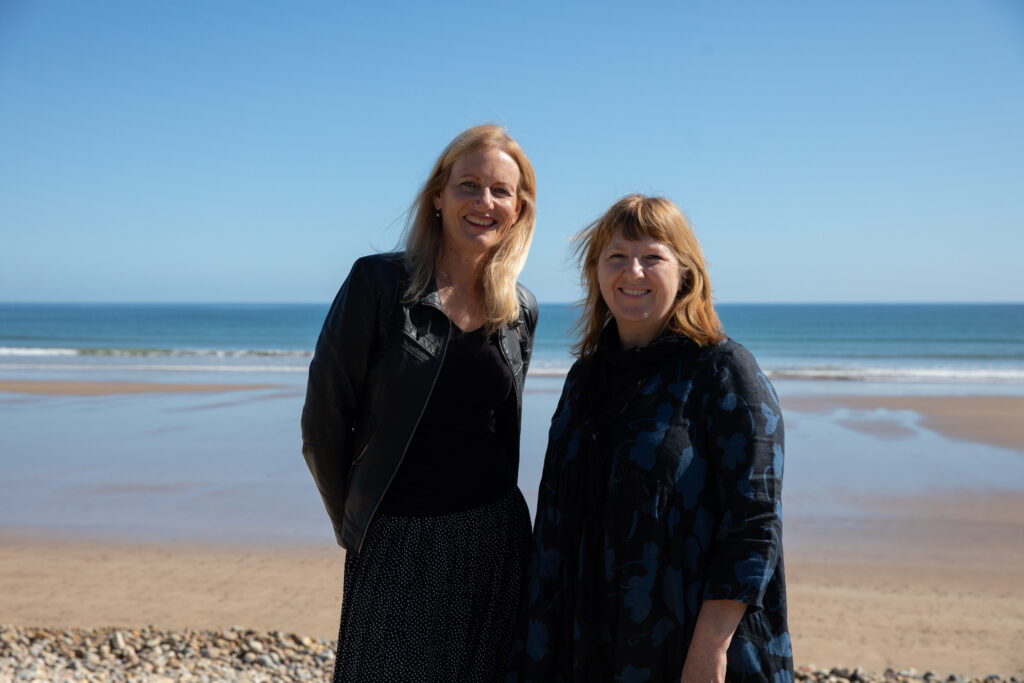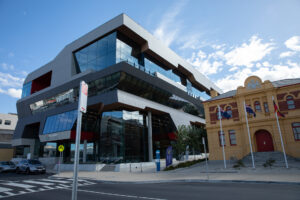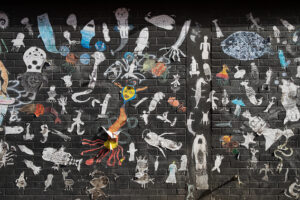
RAASI team Prof. Sandra Gattenhof and Prof. Helen Klaebe at Turners Beach on the north coast of Tasmania; image credit: Bryan Crawford, Longbow Productions.
Our Regional Arts and Social Impact (RAASI) team is starting to consolidate findings that have emerged from community consultations in north west Tasmania and central western Queensland, engagement with research partners, development of impact case studies, digital stories, and participant interviews. Three emergent themes and significant points of commonalities in the data include (1) social inclusion and community wellbeing, (2) eco-system approach to art, culture and creativity, and (3) sustainability and innovation. We also found geography and place are key signifiers of community identification, opportunity, and strength; there is collective recognition of arts, culture, and creativity as shared assets; grassroots activities and projects, as well as high-profile programs, are perceived as essential for community wellbeing; and art, culture, and creativity are considered critical platforms for inclusion, support, and thriveability.
The RAASI team recently travelled to palawa country in north west Tasmania to speak with leaders in Devonport, Burnie, and Wynyard about the impact of art, culture, and creativity in their communities. We discussed the role the creative arts have in future regional communities, the importance of creative skill building for enhancing socioeconomic development and community well-being, and the significance of place in art-making and creativity. We also continued our fieldwork through a series of follow-up interviews and captured amazing visual footage.

Devonport’s paranaple arts centre; image credit: Bryan Crawford, Longbow Productions.
One participant described local initiatives–like the Paper On Skin exhibition in Devonport’s paranaple arts centre–as “not only an intrinsic art project but a wonderful project for the community and the region [greater north west Tasmania]”. This type of place-based sentiment was echoed by another participant who described the role of place in art and creativity as “everything” in a place like Burnie as it serves as a regional hub for the municipal area and the wider north western region of Tasmania. Building on Burnie’s historic cultural legacy was also seen by many as of critical importance to the future of the city. “We have such a dynamic and diverse community in Burnie and we are committed to building on the city’s historic cultural fabric through a whole of community approach” and local initiatives that are “factored around community co-creation” and storytelling said one interviewee.

Burnie, a ‘City of Makers’; image credit: Bryan Crawford, Longbow Productions.
Another participant spoke of the importance of inclusive and embedded place-based approaches to art, culture, and creativity–in Shorewell Park and greater Burnie–as key facilitators of social inclusion and community wellbeing. They described effectual place-based arts as fundamental drivers of vibrancy, creativity, and community ownership: “it’s about involving the whole of community right from the beginning of a project–as collaborators, designers, creators of their place–and I think that is what revitalises neighbourhoods”.
On the topic of sustainability and innovation, one participant emphasised the importance of rethinking how the value of the arts is viewed. The arts should be recognised “as vital to the whole process of a community” they told us. Especially in a place like Burnie where the creative identity continues to evolve, the participant said, this is a time, more than any other, where the role of the creative arts must be front and centre to ensure the future realisation and growth of the Burnie community”.

Laneway art in Devonport; image credit: Bryan Crawford, Longbow Productions.
A First Nations participant underscored capacity building, finding pathways, and enabling people to realise that their creative aspirations require an ecosystem approach. They stressed while parts of Tasmania’s north west region can seem isolated, it is “full of amazingly creative people”. “The future of our community depends on art, culture and creativity; it is through the things that the creative community do that people come together and feel the connection to place and each other”.
Another participant discussed the importance of creativity in addressing existing social challenges, driving opportunities for innovation across multiple sectors, and shaping future sustainable communities. “For many communities living in Wynyard, Smithtown, and along the coast where they are facing socioeconomic disadvantage, creativity provides a toolkit for people to be able to exist and thrive in their communities”. An interviewee expressed that “if people can think creatively they can be innovative in future-facing industries”. Creativity was highlighted as a way of thinking, being, and existing in the world, while offering so much intrinsic value; but the need to enhance existing access to digital resources and creative industry skill-building in the region, especially for youth, was also emphasised.